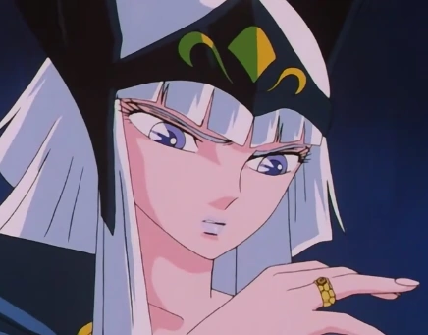The Asgard saga is an excellent example of how creative storytelling can bridge the gap between different cultural mythologies and fictional universes.
The Asgard saga draws from Norse mythology and is inspired in the 1988 film “Saint Seiya: The Heated Battle of the Gods.” This storyline intertwines Nordic mythos with the Saint Seiya universe, presenting a unique blend of ancient legends within the context of the anime series.
This particular storyline artfully weaves together elements from Nordic mythos and the established Saint Seiya universe, resulting in a distinctive and captivating narrative.
Saint Seiya: Evil Goddess Eris
The first Saint Seiya movie, “Saint Seiya: The Heated Battle of the Gods,” was released in 1987. The movie introduced the character of Eris, the goddess of Discord, who kidnaps Athena and is fought by the Bronze Saints.
The movie also introduced the five Ghost Saints, who are defeated by the Bronze Saints. In the Asgard Saga of the Saint Seiya anime series, the enemies are the God Warriors, who are based on the characters from the first movie.
Saint Seiya: The Heated Battle of the Gods
“Saint Seiya: The Heated Battle of the Gods” is the second movie in the Saint Seiya franchise, which is based on the manga and anime series of the same name.
It was released in Japanese theaters on March 12, 1988, and its positive reception contributed to the continuation of the series.
The independent movie, not considered part of the Saint Seiya canon, likely occurs after the 12 Temples arc. It commences with Cygnus Hyoga rescuing a man in Siberia, who warns of impending catastrophe in the realm of Odin, Asgard
Hyoga’s disappearance prompts Saori, Shiryu, Shun, and Seiya to venture to Asgard. There, they meet Dolbar, the leader, and Loki, his assistant, who both arouse suspicion. Frey and Freya offer shelter, but God Warriors show hostility. Shiryu encounters Hyoga (disguised as Midgard), Shun fights Ulr, and Ikki battles Grung.
Seiya confronts Loki, finds Athena, and battles Dolbar with Hyoga and Ikki. The Sagitarius Gold Cloth empowers Seiya to defeat Dolbar, but Athena remains asleep.
Frey’s sacrifice destroys Odin’s statue, revealing Yggdrassil. As Frey stabs the statue, it crumbles, unveiling the grand Yggdrassil tree. Read about Greek mythology in Saint Seiya.
The movie deviates from canon but aligns with the series’ themes, involving Bronze Saints’ battles against God Warriors and their efforts to save Athena, showcasing intense clashes and supernatural elements within the context of Asgard’s mythology.
Nord Mythology in Saint Seiya: Asgard Saga
The Asgard saga, inspired by the 1988 film “Saint Seiya: The Heated Battle of the Gods,” intertwines the realms of Norse mythos with the established Saint Seiya universe.
It introduces figures from Norse pantheon like Odin, Loki, Frey, and Freya, adapting them to fit the anime’s context. The saga’s plot revolves around a clash between the Bronze Saints and the Asgard’s God Warriors, borrowing from the ancient Norse theme of cosmic conflict.
The concept of Asgard itself, the realm of gods, mirrors its mythological counterpart. The mystical tree Yggdrassil, symbolizing the universe’s interconnectedness, is central to the saga, aligning with Norse beliefs.
The film portrays battles against God Warriors named after mythological figures such as Midgard, Ulr, and Grung. This amalgamation of divine beings and battles against them echoes the mythical struggles between gods and mortals.
These mythological references grant the saga depth and originality, reimagining iconic deities and stories within the Saint Seiya framework. To know more about nord references in Saint Seiya, click here.
By intertwining Norse myths with its own universe, the series showcases a creative approach to incorporating diverse cultural elements into its narrative, ultimately creating a dynamic and engaging storyline that captivates both anime enthusiasts and mythology aficionados.

